What are those brown patches?
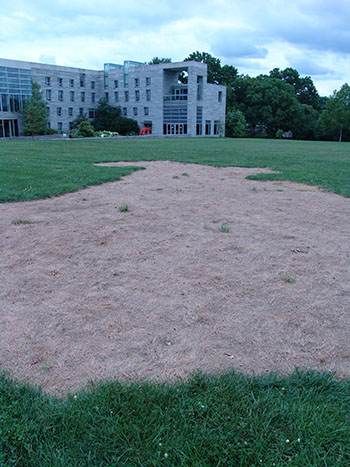 Although the combined 6 ½ acres of organic lawns below Parrish Hall are thriving, you might have noticed three large brown patches in front of Mertz Dorm. These are areas where we are killing off a pernicious weed, Cynodon dactylon, aka. wiregrass, bermudagrass, couchgrass, devilgrass, or dogtooth grass. It is a perennial turfgrass grown deliberately in southern regions in lawns, golf courses, and athletic fields.
Although the combined 6 ½ acres of organic lawns below Parrish Hall are thriving, you might have noticed three large brown patches in front of Mertz Dorm. These are areas where we are killing off a pernicious weed, Cynodon dactylon, aka. wiregrass, bermudagrass, couchgrass, devilgrass, or dogtooth grass. It is a perennial turfgrass grown deliberately in southern regions in lawns, golf courses, and athletic fields.
It is one tough plant: some improved hybrids of the species can be maintained at a height of ¼”! It tolerates heat, drought, salt, and heavy wear. It spreads by stolons, rhizomes, seed (non-hybrids only), and even mowed clippings. Why not embrace such a durable species? Because in our region, which is the cold edge of its range, it spends about five months of the year brown and dormant.
In 2012, we attempted to organically kill a section of wiregrass along the northern edge of Mertz Lawn. We first used a tractor-pulled york rake to comb through the upper few inches of the soil, removing the bulk of its rhizomes and stolons. We followed up with FIVE applications of a concentrated citric acid herbicide. Each application caused the grass to drop its leaf blades, but they regrew from the unfazed stolons over and over again.
The past two summers, we opted to eradicate patches of wiregrass with glyphosate (trade name Roundup). It required one overall spraying and a few touch ups to create the thoroughly-dead brown spots you see today, which will be re-seeded with a tall fescue blend this September. Although glyphosate is a synthetic herbicide, and debates about its health and environmental safety rage on, arboretum staff weighed its risks against the urgency of the rapidly-spreading weed patches and the need to keep the lawn’s utility for college students’ and summer campers’ recreation.
In 2015, we will utilize the organic control method that I often recommend as a non-toxic alternative– solarization. When implemented optimally, 8 weeks under clear plastic can sustain soil temperatures up to 130 degrees, killing not only many weeds and seeds, but also fungal diseases and insect pests. While beneficial microorganism populations will also be reduced, they tend to recolonize quickly, or can be reintroduced through compost or compost tea applications. See UC Davis’s outstanding publication on solarization and try it on your own problem areas.
Check out all our past commentary on our organic lawn initiative.





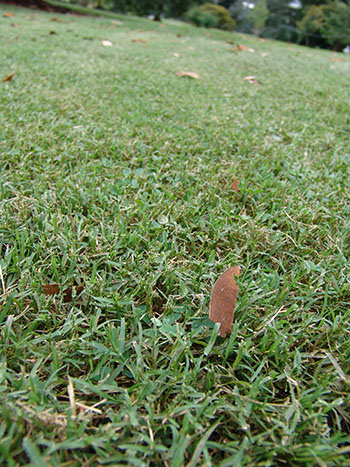
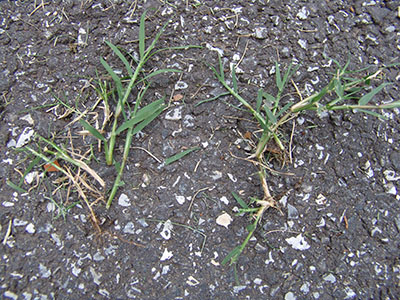
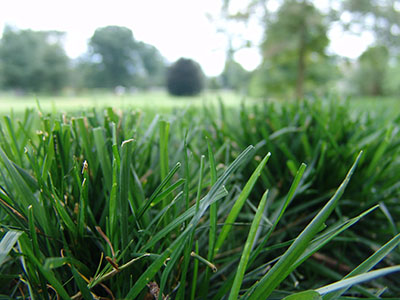

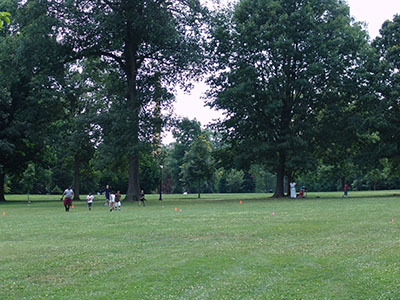
No Comments